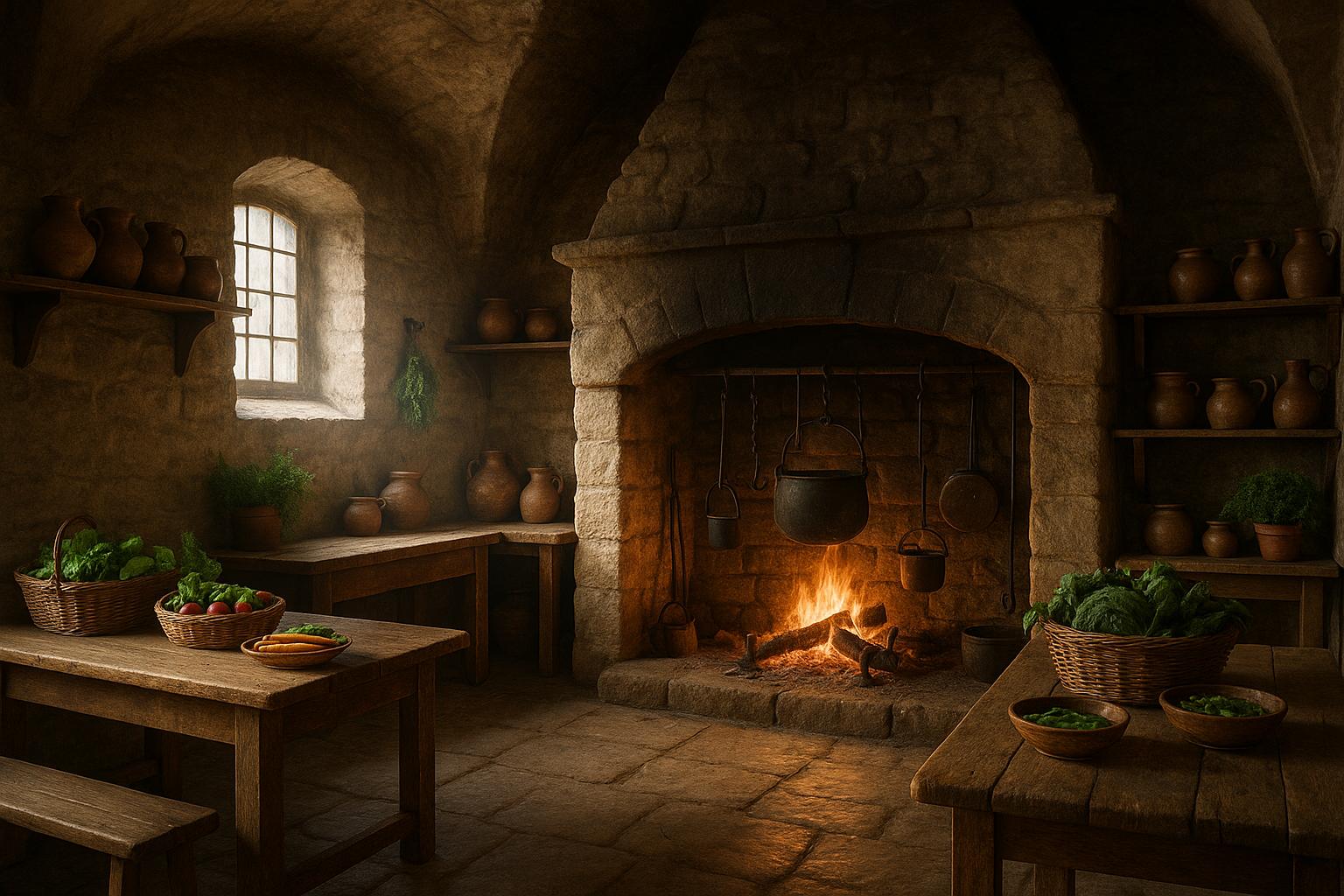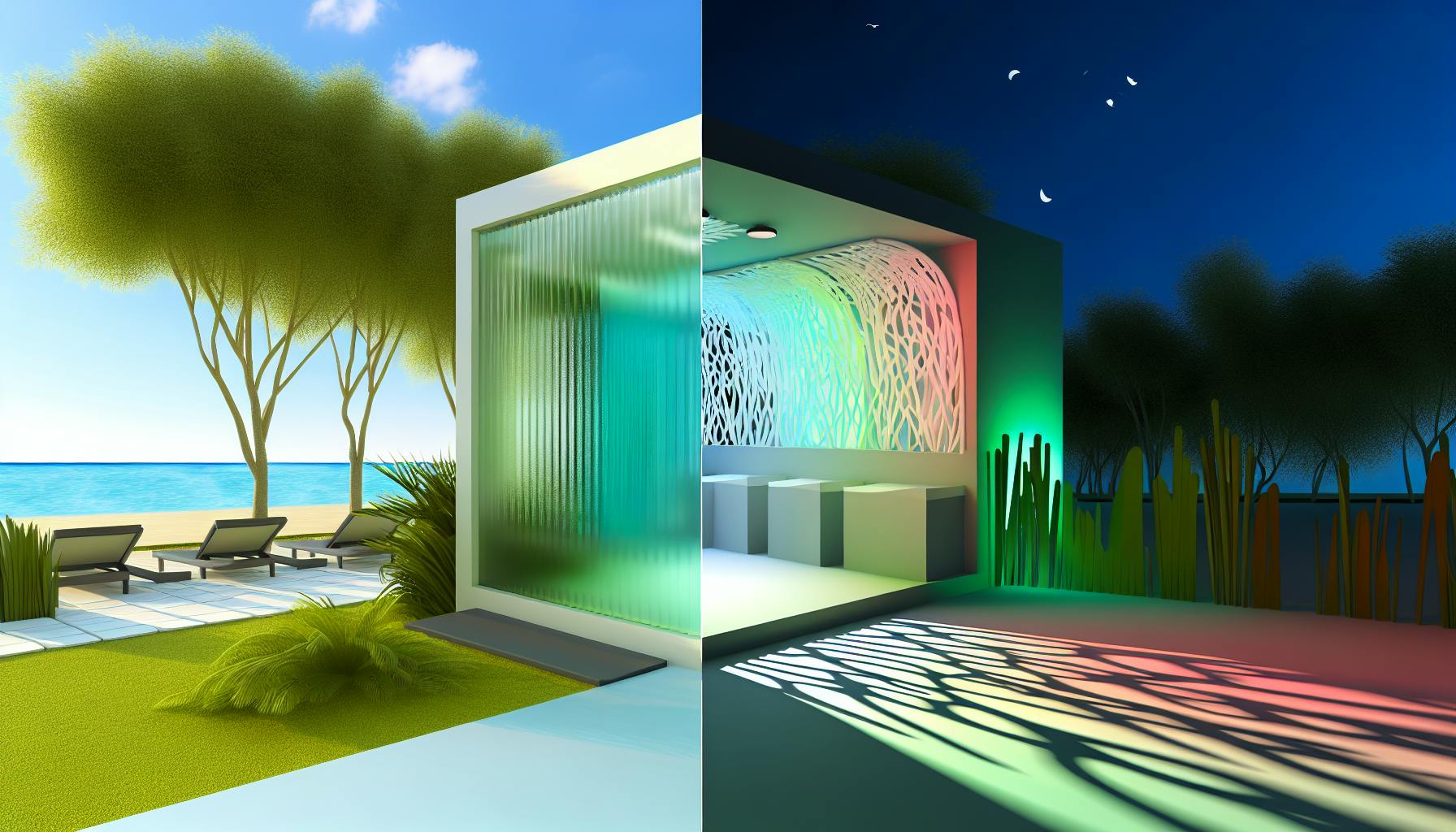Natural ventilation keeps indoor air fresh and reduces energy use without relying on mechanical systems. Here's what you need to know:
- Energy Savings: Natural ventilation can cut energy use by 10–30% in the right climates.
- Comfort: Airflow at 160 ft/min can make indoor spaces feel 5°F cooler.
- Efficiency: Naturally ventilated buildings use about 40 kWh/m² annually, compared to 50–90 kWh/m² for mechanical systems.
- Key Metrics:
- Air Changes Per Hour (ACH): Measures how often air in a room is replaced.
- Cooling Effectiveness: Evaluates how much natural ventilation reduces cooling needs.
- Climate Suitability Index (CSI): Assesses if local weather supports natural ventilation.
Quick Tips:
- Use tools like thermal anemometers or differential pressure gauges for accurate airflow and pressure measurements.
- Design elements like window placement, building orientation, and ventilation openings are critical.
- Metrics such as ACH and cooling performance help architects optimize building designs for energy efficiency and comfort.
Natural ventilation is a simple yet effective way to improve indoor air quality and reduce energy consumption. Let’s dive into the details!
Calculate the feasibility of natural ventilation for your project
Airflow Measurements
Getting airflow measurements right is key to assessing how well natural ventilation performs.
Air Volume Flow
Air volume flow measures the speed at which air moves through a space, directly influencing indoor air quality and comfort levels. This flow is driven by natural factors like wind pressure and temperature differences. It’s typically measured in cubic feet per minute (CFM).
To calculate airflow caused by wind, use this formula:
Q_wind = K • A • V
Where:
- Q_wind: Airflow rate
- K: Effectiveness coefficient
- A: Opening area
- V: Outdoor wind speed
For comfort, indoor wind speeds should stay below 0.447 mph . The size of the ventilation openings plays a big role in airflow. Always use the smaller opening area in your calculations, as it determines the airflow limit .
Another useful metric is Air Changes Per Hour (ACH), which measures how often the air in a space is fully replaced.
Air Changes Per Hour
ACH goes beyond volume flow by showing how frequently all the air in a room is replaced.
"Air changes per hour, which is often abbreviated as ACH, is a calculation of how many times per hour the entire volume of air in a given space is replaced with supply and/or recirculated air."
A 2007 study of eight Lima hospitals revealed that naturally ventilated clinical rooms reached a median of 28 ACH, far surpassing the 12 ACH standard for mechanical systems . Older buildings (pre-1950) achieved up to 40 ACH, while newer naturally ventilated rooms averaged 17 ACH .
To calculate ACH:
- Imperial units: ACH = (60 × CFM) ÷ Room Volume (ft³)
- Metric units: ACH = (3.6 × Flow Rate in L/s) ÷ Room Volume (m³)
Getting these numbers right requires the proper tools.
Measurement Tools
Accurate airflow measurements depend on specialized instruments. Here’s a quick guide:
| Tool Type | Function | Best Use Case |
|---|---|---|
| Thermal Anemometer | Measures air speed and temperature via a heated wire | For precise point measurements |
| Vane Anemometer | Tracks mechanical velocity | For general airflow patterns |
| Pitot Tube | Measures pressure differences | For duct system measurements |
Be mindful of common issues like placing devices incorrectly or ignoring air density changes. For example, warm air behaves differently than cool air, and humid air moves slower because of its higher density .
To get reliable results, focus on:
- System airflow in HVAC equipment
- Supply and return airflow in duct systems
- Fresh air intake through mechanical ventilation
Proper calibration and strategic placement of your tools are essential for gathering accurate data to guide effective ventilation solutions.
Cooling Performance Metrics
Understand natural ventilation cooling by focusing on key performance metrics and using accurate measurement tools.
Cooling Effectiveness Score
This score evaluates how much a building's cooling load is reduced through natural ventilation. The formula used is:
R_cooling = (Pre‑NV Cooling Need – Post‑NV Cooling Need) / Pre‑NV Cooling Need
Factors like the building's envelope heat capacity, relative humidity, and ventilation schedules can influence cooling efficiency by around 14.28% . For example, during the 2022 Shanghai lockdowns, optimized natural ventilation increased cooling capacity by 60%, resulting in an R_cooling of 0.222 .
Climate Suitability Index
The Climate Suitability Index (CSI) assesses whether local weather conditions are favorable for natural ventilation. It accounts for factors such as:
| Factor | Impact on Ventilation |
|---|---|
| Internal Heat Gains | Affects required ventilation rates |
| Minimum Ventilation Rate | Sets baseline requirements |
| Outdoor Dew Point | Influences comfort conditions |
| Ceiling Height | Impacts air distribution |
| Heating/Cooling Setpoints | Determines operational range |
The Natural Ventilation Suitability Tool combines these elements in a single-zone model, helping guide early design decisions .
Climate Usage Ratio
This metric measures how well buildings take advantage of favorable weather for natural ventilation. Regional differences can have a big impact:
- High-Altitude: Lhasa achieves an R_cooling of 0.937 .
- Basin: Leshan hits an Rc of 1.010 .
- Humid Zones: HSCW regions show a threefold increase in RH sensitivity, with an average of 44.69% .
Schedule-based optimization reveals a 15.25% variation in ventilation effectiveness during working hours compared to a 25.74% difference during non-working hours . These insights are crucial for design planning and performance evaluations.
sbb-itb-1be9014
Pressure Measurements
Understand and measure pressure differences to fine-tune natural ventilation systems.
Pressure Hours
Natural ventilation relies on wind and temperature differences. Wind creates positive pressure on the side facing the wind (windward) and negative pressure on the opposite side (leeward). Temperature differences, on the other hand, cause stack effects. To measure these pressure differences effectively, consider the following tools:
| Measurement Tool | Application | Sensitivity Range |
|---|---|---|
| Differential Pressure Gauges | Air handling systems | 0.2″ H2O – 15,000 psi |
| Pitot Tubes | Duct/tunnel airflow | Variable flow rates |
| Piezoresistive Sensors | Velocity calculations | Precise pressure differences |
| Ultrasonic Flowmeters | Average airflow | Continuous monitoring |
"Natural ventilation systems rely on pressure differences to move fresh air through buildings." – Whole Building Design Guide
These measurements are essential for making informed design decisions. Accurate data allows for adjustments that improve system performance and overall comfort.
Design Guidelines
Pressure data is key to refining design elements for better ventilation. Here are some strategies:
- Window Placement: Position windows on opposite or offset sides to encourage cross-ventilation and improve air circulation.
- Building Orientation: Align the building's ridge perpendicular to prevailing summer winds .
- Stack Effect Optimization: Place exhaust openings higher than inlets, account for seasonal temperature changes, and leverage temperature differences for better airflow.
Differential pressure gauges are particularly useful, capable of detecting even small pressure changes as low as 10″ H2O (0.36 psi) . This level of detail helps designers fine-tune ventilation systems, ensuring efficient airflow while maintaining comfortable indoor conditions.
Stack effect ventilation works especially well in winter, when the temperature difference between indoors and outdoors is at its highest .
Using Metrics in Practice
Design Applications
Architects rely on natural ventilation metrics - like annual ventilation hours, cooling efficiency, and air changes per hour (ACH) - to improve building performance. These metrics guide key design decisions:
| Design Element | Metric Application | Target Range |
|---|---|---|
| Window Placement | Cross-ventilation potential | At least 5% of floor area |
| Room Dimensions | Depth-to-ceiling height ratio | 2.5–5× room height |
| Opening Size | Airflow volume | 400–600 mm (15.7–23.6 in) height |
Natural ventilation can cut cooling energy use by 40–50% in urban areas across Europe and North America, and by 20–40% in parts of Asia .
Performance Testing
To evaluate performance, consider these key areas:
- Weather and System Dynamics: Analyze weather patterns and how systems perform under steady or changing conditions. For example, optimizing designs in Shanghai increased ventilation hours by 62% and cooling capacity by 60% .
- Building Systems: Assess stable and variable conditions, including thermal mass effects. Focus on metrics like reduced cooling loads, annual hours of acceptable indoor conditions, and air change rates.
- Operational Factors: Compare actual performance with design goals. A recent survey showed only 59% of buildings met user satisfaction, falling short of ASHRAE Standard 55 guidelines .
These findings help refine designs through digital tools.
Architecture Helper Analysis

Platforms like Architecture Helper use ventilation metrics to enhance design and check performance. Features include:
- Real-time analysis to optimize window placement and sizing.
- Tools to ensure compliance with standards, such as providing at least 7 m³ of air per person in crowded spaces .
The platform also ensures room depths stay within 5 times the ceiling height and verifies that openings meet the recommended 4 air exchanges per hour . These tools streamline the process of achieving efficient, functional designs.
Conclusion
Summary Points
Natural ventilation metrics play a key role in assessing and improving building performance. Important indicators include annual ventilation hours, cooling energy performance, and air change rates (ACH). These metrics can lead to substantial energy savings, though their impact varies by region. For example:
| Climate Region | Energy Reduction | Key Metrics to Monitor |
|---|---|---|
| Europe/North America | 40–50% | Annual ventilation hours, ACH |
| Asian Continent | 20–40% | Cooling load reduction |
Designers should focus on the interplay between envelope heat capacity and relative humidity, as these factors can influence ventilation hours by 7.28% and cooling efficiency by 14.28% . Tracking these metrics helps maintain comfort for occupants while optimizing energy use. Emerging technologies are further refining these measurements.
New Developments
Recent advancements are making ventilation assessments more precise and efficient. For instance, tracer gas methods now allow for detailed airflow analysis without interfering with natural airflows . A passively cooled office building in Stuttgart demonstrated the potential of these methods, achieving annual energy savings of 4 kWh/m² .
Other innovations include multi-point CO₂ monitoring and advanced free-cooling techniques, which have been shown to reduce peak summer cooling demands by as much as 40% in Belgium . These updates are particularly critical as buildings account for 40% of final energy consumption in many European countries .
The field is also adopting new dynamic tools like natural ventilation cooling effectiveness (NVCE) and climate potential utilization ratio (CPUR) . These metrics give designers more precise ways to enhance building performance while cutting energy use. With these tools, the future of energy-efficient building design looks increasingly promising.


